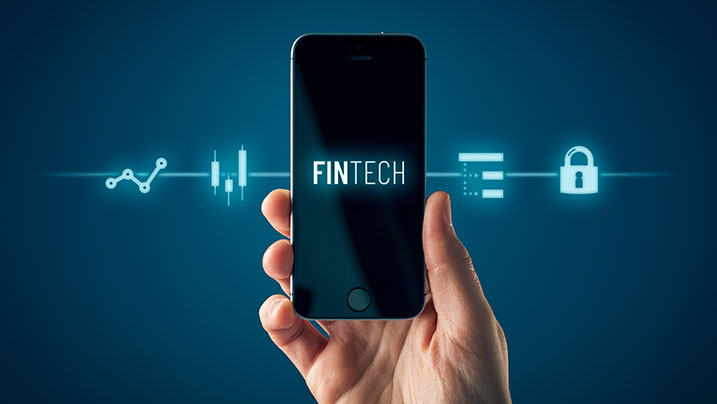CKYC Registry
-
Customer Service Contact us Service request Locate a branch
Find all the help you need
Scan the QR, get our app, and find help on your fingertips

Help CenterSupport topics, Contact us, FAQs and more
-
Login
Are you ready for an upgrade?
Login to the new experience with best features and services
-
Login
Are you ready for an upgrade?
Login to the new experience with best features and services
- Accounts
-
Deposits
IDFC FIRST Bank Deposits
View all Deposits -
Loans
IDFC FIRST Bank Loans
View all Loans - Wealth & Insure
-
Payments
IDFC FIRST Bank Payments
View all Payments -
Cards
IDFC FIRST Bank Cards
View all Cards - Blogs
- Corporate Account
-
Cash Management Services
IDFC FIRST Bank Cash Management Services
View all Cash Management Services - Supply Chain Finance
-
Corporate Lending
IDFC FIRST Bank Lending
View all -
Treasury
IDFC FIRST Bank Treasury
See more details - NBFC Financing
Support topics, Contact us, FAQs and more
- IDFC FIRST Bank Accounts
-
Savings Account
-
Corporate Salary
Account -
Senior Citizens
Savings Account -
First Power
Account -
Current Account
-
NRI Savings
Account -
TASC Institutional
Account -
Savings Account
Interest Calculator
- IDFC FIRST Bank Deposits
-
Fixed Deposit
-
Recurring Deposit
-
NRI Fixed Deposit
-
Safe Deposit Locker
-
FD Calculator
-
RD Calculator
- IDFC FIRST Bank Loans
-
Personal Loan
-
Consumer Durable
Loan -
Home Loan
-
Business Loan
-
Professional Loan
-
Education Loan
-
New Car Loan
-
Pre-owned Car Loan
-
Two Wheeler Loan
-
Pre-owned Two
Wheeler Loan -
Commercial Vehicle
Loan -
Gold Loan
-
Loan Against Property
-
Loan Against Securities
-
Easy Buy EMI card
-
Personal Loan
EMI Calculator -
Education Loan
EMI Calculator -
Home Loan
EMI Calculator
- IDFC FIRST Bank Wealth & Insure
-
FIRST Select
-
FIRST Wealth
-
FIRST Private
-
Mutual Funds
-
Sovereign Gold Bond
-
Demat Account
-
Term Insurance
-
Life Insurance
-
Health Insurance
-
General Insurance
-
Bonds
-
Loan Against
Securities -
Portfolio Management
Service
- IDFC FIRST Bank Payments
-
FASTag
-
Credit Card
Bill Payments -
UPI
-
Funds Transfer
-
Forex Services
-
Pay Loan EMI
- IDFC FIRST Bank Cards
-
Ashva :
Metal Credit Card -
Mayura :
Metal Credit Card -
FIRST Millennia
Credit Card -
FIRST Classic
Credit Card -
FIRST Select
Credit Card -
FIRST Wealth
Credit Card -
FIRST WOW!
Credit Card -
Deals
-
Debit Cards
-
Co-branded Cards
-
Credit Card
EMI Calculator -
FIRST Corporate
Credit Card -
FIRST Purchase
Credit Card -
FIRST Business
Credit Card
- Premium Metal Credit Cards
-
AshvaLifestyle1% Forex₹2,999
-
MayuraLifestyleZero Forex₹5,999
-
FIRST PrivateInvite Only
- Best for travellers
-
MayuraZero ForexMetal₹5,999
-
Ashva1% ForexMetal₹2,999
-
FIRST WOW!Zero ForexTravelLifetime Free
-
FIRST SWYPTravel OffersEMI₹499
-
FIRST Select1.99% ForexLifestyleLifetime Free
-
FIRST Wealth1.5% ForexLifestyleLifetime Free
-
Club VistaraTravelLifestyle₹4,999
-
IndiGo IDFC FIRST Dual Credit CardTravelLifestyle₹4,999
- Max benefits, Free for life
-
FIRST Classic10X RewardsShoppingNever Expiring Rewards
-
FIRST Millennia10X RewardsShoppingNever Expiring Rewards
-
FIRST Select10X RewardsLifestyle1.99% Forex
-
FIRST Wealth10X RewardsLifestyle1.5% Forex
-
FIRST WOW!RewardsTravelZero Forex
-
LIC ClassicRewardsInsuranceShopping
-
LIC SelectRewardsInsuranceShopping
- Reward Multipliers
-
AshvaLifestyleMetal₹2,999
-
MayuraLifestyleZero Forex₹5,999
-
FIRST ClassicNever Expiring RewardsShoppingLifetime Free
-
FIRST MillenniaNever Expiring RewardsShoppingLifetime Free
-
FIRST SelectNever Expiring RewardsLifestyleLifetime Free
-
FIRST WealthNever Expiring RewardsLifestyleLifetime Free
- Rewards & Credit on UPI
-
FIRST Power+FuelUPI₹499
-
FIRST PowerFuelUPI₹199
-
FIRST EA₹NVirtual1% Cashback₹499
-
FIRST DigitalVirtualUPI₹199
-
IndiGo IDFC FIRST Dual Credit CardUPITravelDual cards
- Fuel and Savings
-
FIRST PowerRewardsUPI₹199
-
FIRST Power+RewardsUPI₹499
-
LIC ClassicRewardsInsuranceShopping
-
LIC SelectRewardsInsuranceShopping
- Express and Flaunt
-
AshvaMetal1% Forex₹2,999
-
MayuraMetalZero Forex₹5,999
-
FIRST SWYPEMIOfferMAX₹499
-
FIRST MillenniaRewardsShoppingLifetime Free
- FD Backed rewarding Credit Cards for all
-
FIRST EA₹NVirtualCashback₹499
-
FIRST WOW!Zero ForexTravelLifetime Free
-
CreditPro Balance TransferTransfer & SaveReduce InterestPay Smartly
- IDFC FIRST Bank NRI Forex Solutions
-
Send money to India-Wire transfer
-
Send money to India-Digitally
-
Send money abroad
-
Max Returns FD (INR)
- IDFC FIRST Bank MSME Accounts
-
Platinum Current
Account -
Gold
Current Account -
Silver Plus
Current Account -
Merchant Multiplier
Account -
Agri Multiplier
Account -
TASC Institutional
Account -
Dynamic Current
Account -
World business
Account -
First Startup
Current Account
- IDFC FIRST Bank Business Loans
-
Business Loan
-
Professional Loan
-
Loan Against Property
-
Business Loan for Women
-
Working Capital Loan
-
Construction Equipment Loan
-
Machinery Loan
-
Healthcare Equipment Loan
- IDFC FIRST Bank Business Solutions
-
Payment Solutions
-
Tax Payments
-
Doorstep Banking
-
Point of Sale (POS)
-
Escrow Accounts
-
NACH
-
Payment Gateway
-
UPI
-
Virtual Accounts
-
As per amendment in the Income Tax Rules, PAN or Aadhaar are to be mandatorily quoted for cash deposit or withdrawal aggregating to Rupees twenty lakhs or more in a FY. Please update your PAN or Aadhaar. Kindly reach out to the Bank’s contact center on 1800 10 888 or visit the nearest IDFC FIRST Bank branch for further queries.
-
-
Most Searched
Sorry!
We couldn’t find ‘’ in our website
Here is what you can do :
- Try checking the spelling and search
- Search from below suggestions instead
- Widen your search & try a more generic keyword
Suggested
Get a Credit Card
Enjoy Zero Charges on All Commonly Used Savings Account Services
Open Account Now
The year 2015 marked the revolution for FinTech companies in India. Even though modern banking originated in the latter half of the 18th century, numerous FinTech startups emerged in 2015. Fast forward to 2021, the era of the FinTech companies transforming payments, insurance, lending and wealth management. The growth of these companies has been accelerated due to the COVID-19 pandemic. The related health crisis created new opportunities for FinTech companies, like Paytm, Google Pay, Razorpay, Slice, etc., to support financial inclusion. FinTech companies also played a significant role in mitigating the negative economic impact of the COVID-19 pandemic. On the macroeconomic front, the country is at the forefront of an impending FinTech revolution set to transform the face of the banking industry in India.
From economically weaker households to SMEs (Small-Medium Enterprises), the FinTech industry has improved access to banking (account, transaction, insurance and credit) for everyone in recent years. The relationship between the Banking industry and the FinTech sector is not competitive but mutually progressive.
Impact of FinTech Firms on the Banking Sector
Over the last two years, India has warmed up to FinTech startups and supported a massive adoption of digital financial models. Be it paperless lending, mobile banking, digital payments, mobile wallets, insurance, lending, or more, and FinTech has revolutionised every sphere of the traditional banking system. Traditionally in India, banks served as the gateway to payment services. However, a gradual acceptance of FinTech companies, like Paytm, Razorpay, Google Pay, Amazon Pay, PhonePe, MobiKwik, etc., have made them omnipresent today. Whether you use digital payment platforms to pay for hotels, recharge your mobile phones, or buy groceries, there is an increased dependence on these digital solutions.
In 2019, more than 32 billion digital transactions valued at over Rs 69 trillion were recorded across India. By 2025, Indian digital transactions are expected to rise above Rs 238 trillion. Such substantial numbers indicate how the advent of FinTech startups has made banking services easy and convenient. Today, several online platforms can even help calculate loan EMIs and insurance premiums, improving financial awareness for consumers.
READ MORE
The FinTech Industry – The Harbinger of Agility and Enabler of a Versatile Digital Experience
Here are some ways through which the FinTech industry has made banking simple:
1. Advanced Self-service Features:
Not so long ago, when you visited a bank, you would expect to wait in long queues for assistance. Whether it was opening an account, withdrawing or depositing cash, filling forms or completing any other formalities, visiting a bank was time-consuming. However, with the advent of FinTech, the delivery of banking services has changed altogether. FinTech banking platforms allow you to access operational processes, which were earlier only possible by visiting a physical branch. For instance, say you want to open an IDFC FIRST Bank Savings Account or apply for a Personal Loan, you can now complete such processes quickly and seamlessly through a digital process. Additionally, you can transfer funds online, check your account balance, and more digitally, increasing customer convenience.
2. Mobile wallets:
NEFT and RTGS payments have been in place for decades. In addition, the introduction of IMPS made banking more effortless. However, there was still scope of improvement fulfilled by API-led banking platforms, particularly mobile wallets - Google Pay, Amazon Pay, PhonePe, Paytm, etc. These mobile wallets act as a secure platform supporting seamless digital transactions between the bank and consumers. For instance, a money transfer request sent by mobile wallets is received by banks in real-time, ensuring a low-effort and faster banking user experience.
3. Instant payment support:
The growing acceptance of digital transactions in India has led to the phenomenal growth of instant payments. An economy that essentially survived on cash until the last decade is now thriving on Point Of Sale terminals in most aspects of functioning. Furthermore, government efforts, like demonetisation, pushed the growth of instant payment platforms. These platforms allow you to make offline and online payments, easing cashless transactions. You can use the NFC (Near Field Communication) and MST (Magnetic Secure Transmission) technology, sound-based payments platforms, QR code-based payment, Aadhaar Enabled Payment System (AEPS) facility or e-wallets like Paypal, Paytm, Yes Pay, Reliance Money, Mobikwik, Freecharge, etc. Instant payment support has changed the way you spend, save, lend, as well as improved your financial accountability.
4. Voice bots:
Many banks use chatbots today, along with artificial intelligence, advanced algorithms and natural language processing to provide instant and easy banking assistance to users. However, with FinTech on the rise, voice bots are expected to replace chatbots. The adoption of chatbots in banking is expected to enable functions like generating new passwords, opening an account, checking account balance, transferring money, etc., through voice commands instead of typing. Further, invisible payments, thumb impression payment validation, etc., are also some technology-led processes that will revolutionise banking systems.
5. Neobanking:
They are digital banks that complete all transactions through digital or mobile-only platforms, unlike traditional banks that require a physical branch setup. Neobanks use phone numbers, emails or social media identities to support person-to-person payment, mobile deposits, etc. Neobanks like Jupiter, Fi Money, OcareNeo, Niyo, ZikZuk, RazorPayX, InstantPay, Digibank, etc., are on the rise. In the coming years, Neobanks are likely to offer a host of banking services, including instant loans, lending products, opening fixed deposits, investing in a mutual fund scheme, depositing money in a savings account, and more.
FinTech, Forerunners in Economic Contribution
According to the latest report by the National Payment Corporation of India (NPCI), UPI transactions increased threefold during FY 2020-21. The increase was recorded in transaction numbers, as well as in transaction value. In March 2021, there were a total of 2,732 million UPI transactions (in April 2020, this was only 999.6 million), with an overall value of Rs. 5,04,886 crores (against Rs 1, 51,141 crores in April 2020).
Further, a study by the Ministry of Electronics and Information Technology in 2017-18 further gave evidence of its significant growth in the Indian economy. The study reported that the Indian digital economy contributes 8% (nearly $200 billion) to the Indian GDP growth. The report states that by 2025, the digital economy can create more than $1 trillion of economic value for the country.
Staying true to its promise of consistently moving forward and participating in the accelerating economic growth, IDFC FIRST Bank provides its customers with the best-in-class digital banking solutions, assuring 100% ease, comfort and security. Whether it is savings and deposits, getting a loan, investing or buying insurance, or making payments, IDFC FIRST Bank has first-class secure digital platforms to meet every need.
Disclaimer
The contents of this article/infographic/picture/video are meant solely for information purposes. The contents are generic in nature and for informational purposes only. It is not a substitute for specific advice in your own circumstances. The information is subject to updation, completion, revision, verification and amendment and the same may change materially. The information is not intended for distribution or use by any person in any jurisdiction where such distribution or use would be contrary to law or regulation or would subject IDFC FIRST Bank or its affiliates to any licensing or registration requirements. IDFC FIRST Bank shall not be responsible for any direct/indirect loss or liability incurred by the reader for taking any financial decisions based on the contents and information mentioned. Please consult your financial advisor before making any financial decision.
The features, benefits and offers mentioned in the article are applicable as on the day of publication of this blog and is subject to change without notice. The contents herein are also subject to other product specific terms and conditions and any third party terms and conditions, as applicable. Please refer our website www.idfcfirstbank.com for latest updates.























